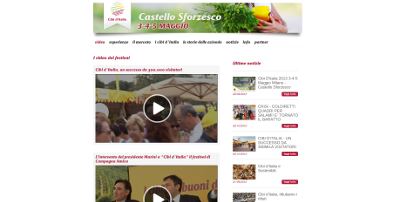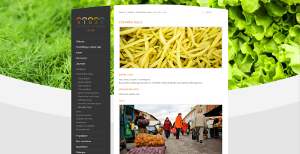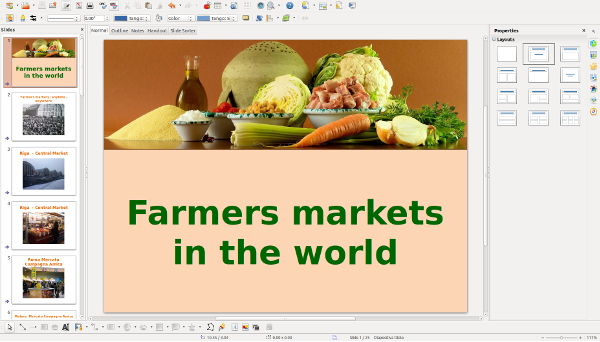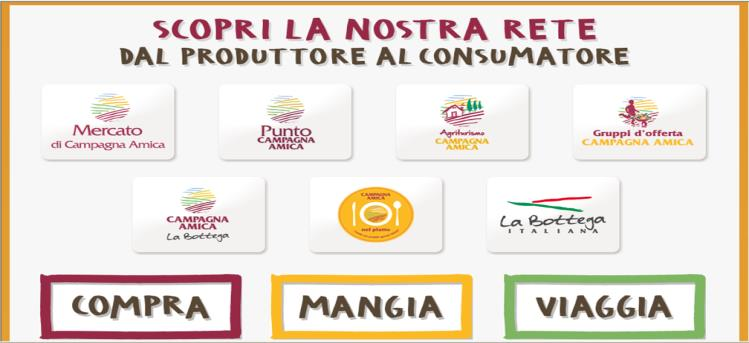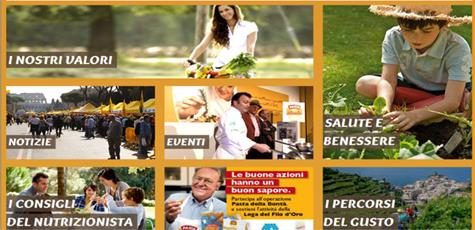Direct Selling: a marketing strategy to improve direct relations between consumers and producers
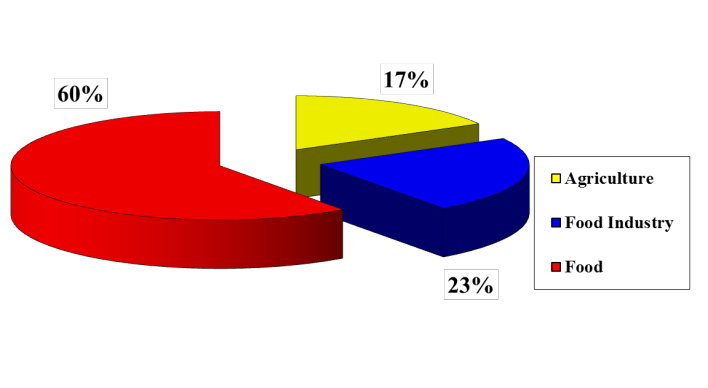
Direct Selling by farmers is a practice which is becoming more necessary when you consider that on average only around 1/5 of the price of food products goes to the producer whilst the remaining part goes to intermediaries in the food supply chain
Selling directly to the consumer can represent an efficient marketing channel by reducing consumers’ cost or by meeting a specific need that clients could not otherwise reliably obtain.
It allows farmers to re-balance the power and reduce the effects of speculation in the agri-food | food supply chain.
A solution to help bridge the gap between the price the producer receives and the price paid by consumers is to improve direct relations between consumers and producers, shortening the marketing channels to consumers and emphasizing the concept of local food.
The changes occurred in civil society, specifically with consumers. Greater awareness of nutrition and attention to health risks from food are all elements that increase demand for products which are guaranteed to be fresh, safe with limited processing. Direct contact between producers and consumers represents an instrument to gain information about the product origin and characteristics and control their quality and freshness.
As for consumers, direct sales offer, first of all, the chance to purchase high quality food at reasonable prices. The absence of intermediaries results in cost saving that, in turn, make high quality products sold using direct channels generally cheaper for consumers, compared to those offered through traditional long food supply chains.
This demand for low cost food goes hand in hand with an increased interest in diversity and distinctiveness in food and even in higher quality and safer food. For example, in Italy consumers search for quality, fresh, and healthy products and highlight this among the main reasons to purchase directly from the grower. Short distribution systems put more emphasis on the quality and the origin of the product.
Apart from economic determinants, there are environmental and social factors motivating consumers to engage in direct purchasing. Direct purchasing offers a more environmentally friendly alternative to the traditional long supply chain.
Finally, locally embedded short supply chain often becomes an occasion to re-discover the existence of seasonal cycles, regional identities, biodiversity, landscape but even gastronomical traditions and, more broadly, the rural culture.
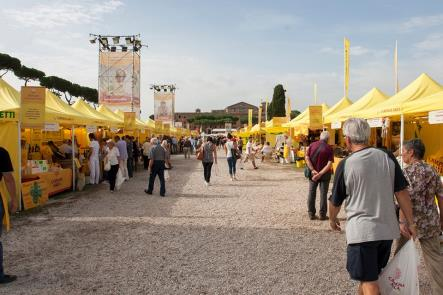
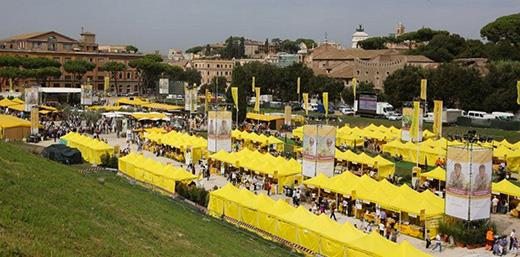
Rome – FOOD OF ITALY 2012
Agricultural Food Festival organized by Coldiretti Campagna Amica in Circo Massimo area: 4 days exposition, biggest farmers market in the world, 200 stand, 300.000 visitors, 10000 Italian specialties offered to people
The practicable solutions: different forms of short supply channels
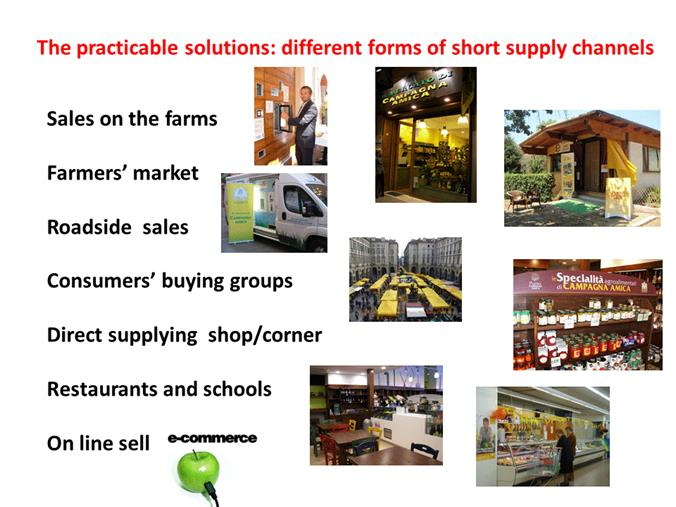
Focus on Farmer Markets
Latvian Farmers Market
San Francisco's City Heights Farmers Market
Current farmers’ markets, in the way they are organized, offer added value from a social and cultural point of view, providing an occasion to share and exchange information. Together with the sale of agricultural products, events are organized, in order to supply information to consumes and encourage their knowledge and communication. This means that farmer markets can be regarded as an answer to the new social need of information, contact and reduction of distances between urban and rural areas (nature)
Shir Halpern, the owner and co-founder of Tel Aviv's Farmers Market in the Tel Aviv Port area, discusses the problems caused by the modern industrialized food industry, and how farmers markets can help make the world a better place
Farmers Markets in the world


www.campagnamica.it
The main large national network of points for the direct sale from the producer to the consumer are the farm, the business outlets, the farmer’s market Campagna Amica, agricultural cooperatives.
In Campagna Amica Points you find only Italian agricultural products.
You come across a world of good products, safe and controlled, directly from the countryside to your table; more convenience and more choice, the certainty of what you eat
The quality of what you eat is determined from the origin. In Campagna Amica points you are sure to find seasonal produce, fresh, quality, tasty and 100% Italian. If the meeting takes place between producers and consumers, we reach both.
And we also convey taste, authenticity and freshness in what you eat.
It is a Network of producers who have:
- the same distinctive mark
- the same regulations governing use of the mark
- the same rules of conduct
- the same code of ethics
- the same system of control of a third




